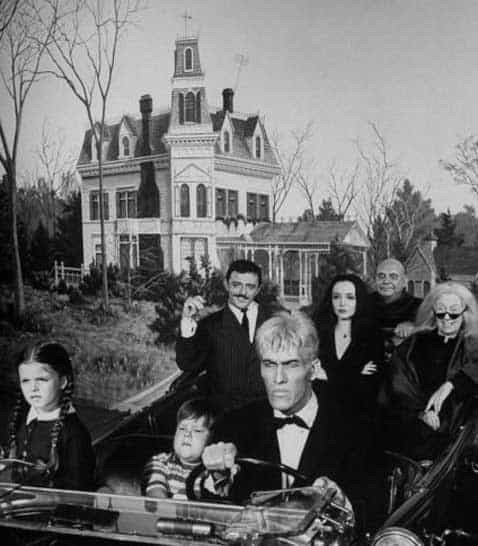
Anatomy of a Haunted House: Frightening Facades
There’s a design formula to the traditional haunted house. Among the hallmarks of horror:
A Historic Pedigree. Gothic, of course, is the go-to architectural style for scares, but a spare, blank-windowed farmhouse can also induce apprehension. And the notorious Amityville Horror home was a mild-mannered Dutch colonial.
Fearsome Features. Turrets, towers, and wrap-around porches are all specter-worthy settings. Leaded- or stained-glass windows—cobwebs are optional, but a nice touch—frame blood moons quite well.
The No-Maintenance Look. While crumbling staircases, broken or boarded-up windows, and peeling roof shingles may be a handyman’s nightmare, such decrepit details heighten the impression that a house has been abandoned to the spirits.
The contemporary buildings featured in this post display none of these classic traits, but have some disturbing qualities nonetheless. Their foreboding facades—some evoking mechanical torture chambers, others with a ghostly or skeletal character—might deter even die-hard trick-or-treaters.

Of their transformation of a former prison/school/funeral home, artist-architects Christophe Berdaguer and Marie Péjus state, “To us, architecture is a space for imaginative possibilities, for telling stories to ourselves and others. It is above all a collective dream, that of a community of people and ghosts.”

House 77 was designed by dIONISO Lab. Stainless steel shutters covering the front of the building are perforated with cryptic symbols. These siglas poveiras are part of a proto-writing system that has been used by the inhabitants of Póvoa de Varzim, Portugal for many generations. Typically inscribed in wood or stone, they are used to signify family histories, identify property, and are also used as magical-religious marks.

Meticulous Photoshopping is behind [ahem] the work of French photographer Zacharie Gaudrillot-Roy. He says, “This series of photographs offers a vision of an unknown world that would only be a picture, without intimate space, with looks as the only refuge.”

Photo: Yao Li
As part of the China International Practical Exhibition of Architecture, the Number Four House by AZL Architects sits in an isolated valley. Much as a traditional Chinese scroll reveals select segments of its content, the horizontal breaks in the building’s contoured concrete facade control the views of the surrounding terrain.

Rare Architects wrapped a laser-cut scrim made of powder-coated aluminum around the Town Hall Hotel in London, an adaptive reuse project. It acts as a phantasm of sorts, blurring the boundaries between architectural eras and places, an apparition in the streetscape.